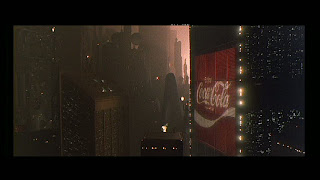Há que admirar o homem por dizer aquilo que lhe vai na alma. Anyway, vou continuar a explorar o tema do product placement, abordando desta vez a ética, na óptica dos profissionais da indústria cinematográfica.
De um ponto de vista dos profissionais, realizadores, guionistas e produtores demonstram preocupações acerca do caminho que o product placement está a tomar, e de que forma é que esta técnica se repercute na indústria cinematográfica. O uso excessivo desta técnica suscita problemas em duas maneiras distintas: Por um lado, evoca a ira nos espectadores, por outro, corrompe trabalho artístico que não tinha qualquer intenção de ser comercial em primeira mão. Com a saturação de product placement em filmes, um dos objectivos primários desta ferramenta de comunicação encontra-se agora em risco - o da criação de realismo em determinadas cenas. As marcas apenas desejam aparecer em filmes sob uma perspectiva positiva, quase áurea, que enalteça profundamente as características das marcas. Contudo, e uma vez que placements nessas condições são cada vez mais frequentes, o realismo perde-se. A glorificação constante de marcas tende, então, a cair num falso realismo, o que transforma o product placement numa táctica deceptiva.
You got to feel some admiration for the man for saying exactly what is on his mind. Anyway, continuing with the topic of product placement, approaching it from an ethical point of view, and in this case, the industry's.
De um ponto de vista dos profissionais, realizadores, guionistas e produtores demonstram preocupações acerca do caminho que o product placement está a tomar, e de que forma é que esta técnica se repercute na indústria cinematográfica. O uso excessivo desta técnica suscita problemas em duas maneiras distintas: Por um lado, evoca a ira nos espectadores, por outro, corrompe trabalho artístico que não tinha qualquer intenção de ser comercial em primeira mão. Com a saturação de product placement em filmes, um dos objectivos primários desta ferramenta de comunicação encontra-se agora em risco - o da criação de realismo em determinadas cenas. As marcas apenas desejam aparecer em filmes sob uma perspectiva positiva, quase áurea, que enalteça profundamente as características das marcas. Contudo, e uma vez que placements nessas condições são cada vez mais frequentes, o realismo perde-se. A glorificação constante de marcas tende, então, a cair num falso realismo, o que transforma o product placement numa táctica deceptiva.
O mérito artístico das pessoas envolvidas na produção de filmes encontra-se também em perigo. Apoio financeiro é algo que assume uma importância extrema para a concretização de filmes, e hoje em dia, esse apoio provém de marcas que procuram maneiras de incluirem os seus produtos em filmes. É um cenário que coloca artistas numa posição comprometedora. Das duas uma: Ou os artistas decidem incorporar produtos nos seus filmes, o que pode contaminar o seu valor artistico, culminando num produto final que não está em consonância com aquilo que os artistas tinham inicialmente em mente, ou então esses mesmos artistas não verão a luz verde para avançarem com os seus projectos – Num negócio em que o poder de dizer não é frágil e ilusório, trabalhadores criativos que sejam “dificéis” ou “pouco cooperativos” podem ser facilmente substituídos por outros que “vêem a luz”.
Nota: Toda a informação presente neste texto foi retirada de Galician, M.L. (2004), Handbook of Product Placement in the Mass Media: New Strategies in Marketing Theory, Practice, Trends, and Ethics. Binghamton, New York: Best Business Books.
From an industry point of view, directors, writers and producers express concerns as to where product placement is going, and what its effects on the industry are. Excessive use of this technique arouses problems in two distinctive ways: On one hand, it “draws the ire of the audience”, and on the other hand, it corrupts artistic work that had no intention on being commercial in the first place. With the oversaturation of product placement in movies, one of the goals of this communication tool may be in jeopardize – the creation of realism in movie scenes. Brands only look to appear in movies under a positive light, one that enhances brand’s qualities. However, and because placements under those conditions are being overly used, realism is at loss. The constant brand glorifying leans into a false realism, turning product placement into a deceptive tactic.
The artistic merit of those involved in producing movies is also endangered. Financial support is of the most extreme importance in order to create a movie, and nowadays, that support comes from brands that look for ways to incorporate their products on movies. That scenario puts artists into a compromised position: or they decide to incorporate product placements in their movies, tarnishing their artistic value and creating a final product that does not resembles what those artists first had in mind, or those same artists won’t get the green light to develop their projects: “in a business where the “clout” to say no is fragile and elusive, “uncooperative” or “difficult” creative workers can be replaced by others who “see the light””.
Note: Every information presented in this text was taken from Galician, M.L. (2004), Handbook of Product Placement in the Mass Media: New Strategies in Marketing Theory, Practice, Trends, and Ethics. Binghamton, New York: Best Business Books.



























